Last updated on January 8, 2024
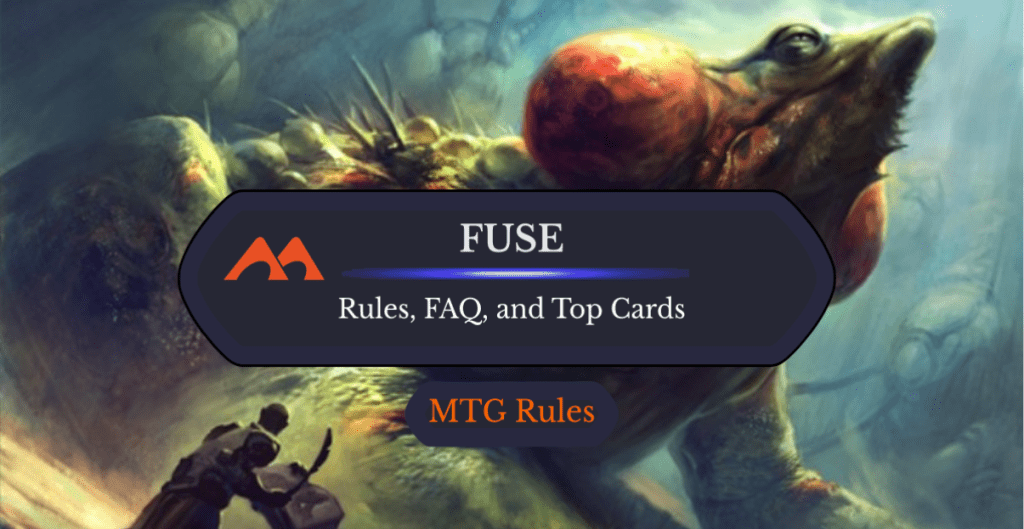
Beck // Call | Illustration by Adam Paquette
In the ever-evolving world of Magic: The Gathering, WotC often brings designs mechanics for players to exploit with the release of newer sets.
One of these is called “fuse,” which, in concept, allows players to combine two spells into a single, potent effect, providing different effects for various board states. Let’s go over its rules and restrictions, and discuss which are the best fuse cards that have seen competitive play and have the most potential for multiple formats.
Without further ado, let's dive right into it!
How Do Fuse Cards Work?
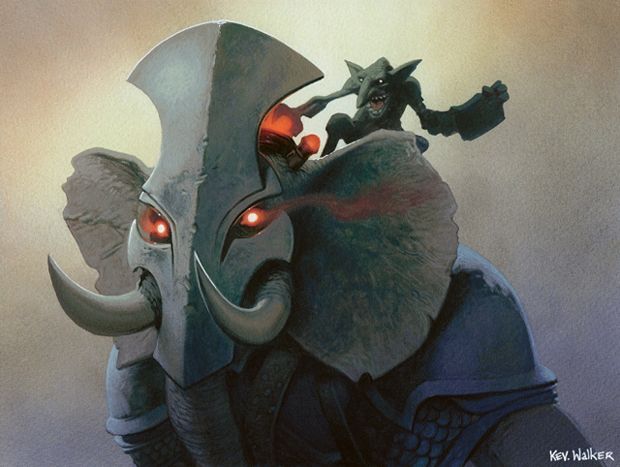
Catch // Release | Illustration by Kev Walker
Fuse cards in Magic: The Gathering are a subtype of split cards featuring a unique mechanic known as “fuse.” These cards consist of two halves, each functioning as an individual instant or sorcery spell. Players have the option to cast either half separately or, for a more potent effect, cast both halves in a single turn by paying the cost of both halves from your hand.
The History of Fuse in MTG
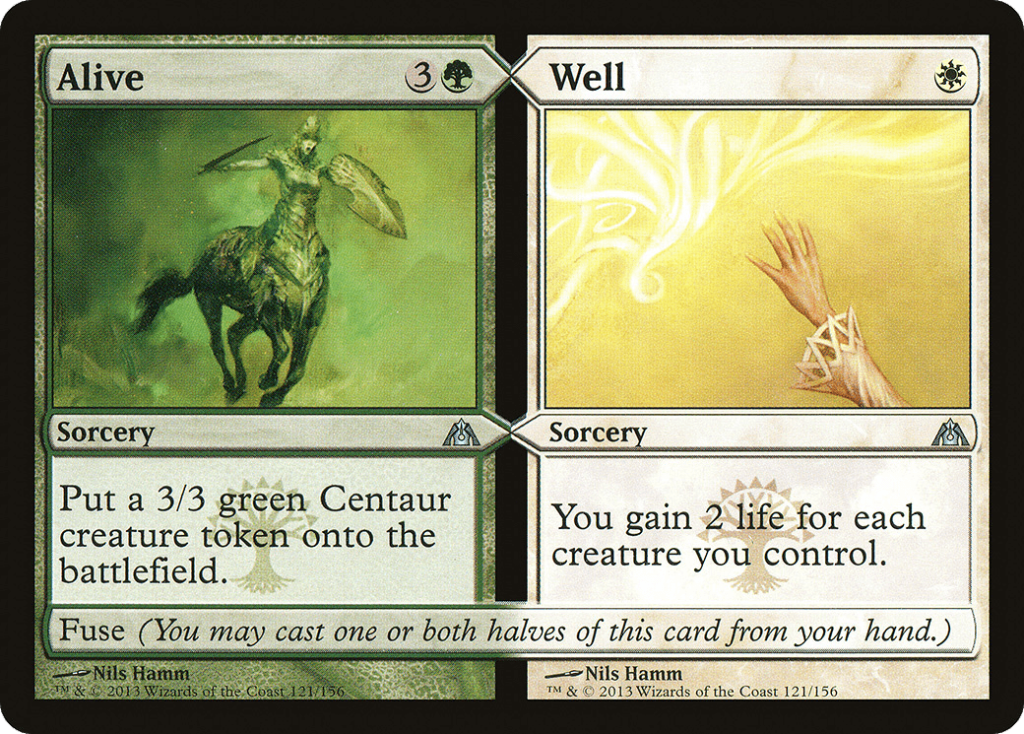
Cards featuring the fuse mechanic made their debut in Dragon's Maze, released on May 3, 2013. The inaugural card showcasing this ability was Alive // Well, and there are a total of 15 others throughout Magic's history that share this ability.
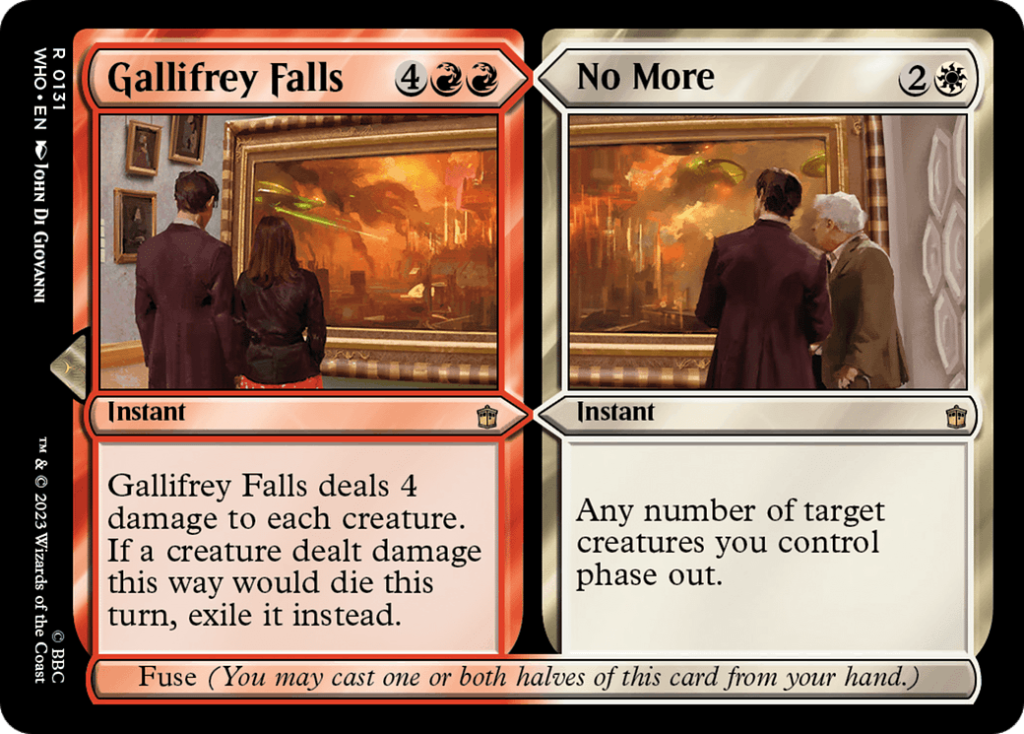
Since its introduction, the fuse mechanic has reappeared only once on Gallifrey Falls // No More from the Doctor Who Commander set. It's definitely not evergreen, and its usage has remained relatively limited, mostly confined to the set of its initial release.
Are Fuse Cards Two Separate Spells?
Fuse cards function similarly to spells with multiple modes, like Cryptic Command. Although a fuse card has distinct effects on each half, it’s considered a single spell that unfolds in separate stages. In essence, it's one spell performing various actions.
How Does Fuse Work on the Stack?
As the card with fuse goes onto the stack, it won’t stack both effects individually. Instead, you treat them as if you were casting a spell with multiple modes, like Farewell, that resolve by reading the card from left to right. If you're only casting one half of a fuse spell, you declare which half when you put it on the stack. The card will be treated as only the name, colors, etc. of the half that you chose while it remains on the stack.
Which Order Do You Cast Fuse Cards?
When you cast both halves of a fuse card, you resolve it from left to right. Note that it's a single stack resolution, meaning you can’t counter one half of the card, but rather, the card as a whole.
Do All Split Cards Have Fuse?
While there are multiple split cards printed through the years, not every split card has the fuse static ability. Examples of these are regular split cards like Fire / Ice and adventures like Bonecrusher Giant.
Can You Cast Both Fuse Spells From the Top of Your Library?
No. You can cast only half of the spell from the top of your library because the fuse ability only applies while the card is in your hand.
What if One Fuse Spell Gets Countered?
If a fused spell is countered, the entire card is countered. The spell is treated as a single card on the stack, so the counterspell simply targets the entire spell, not one half or the other.
Gallery and List of Fuse Cards



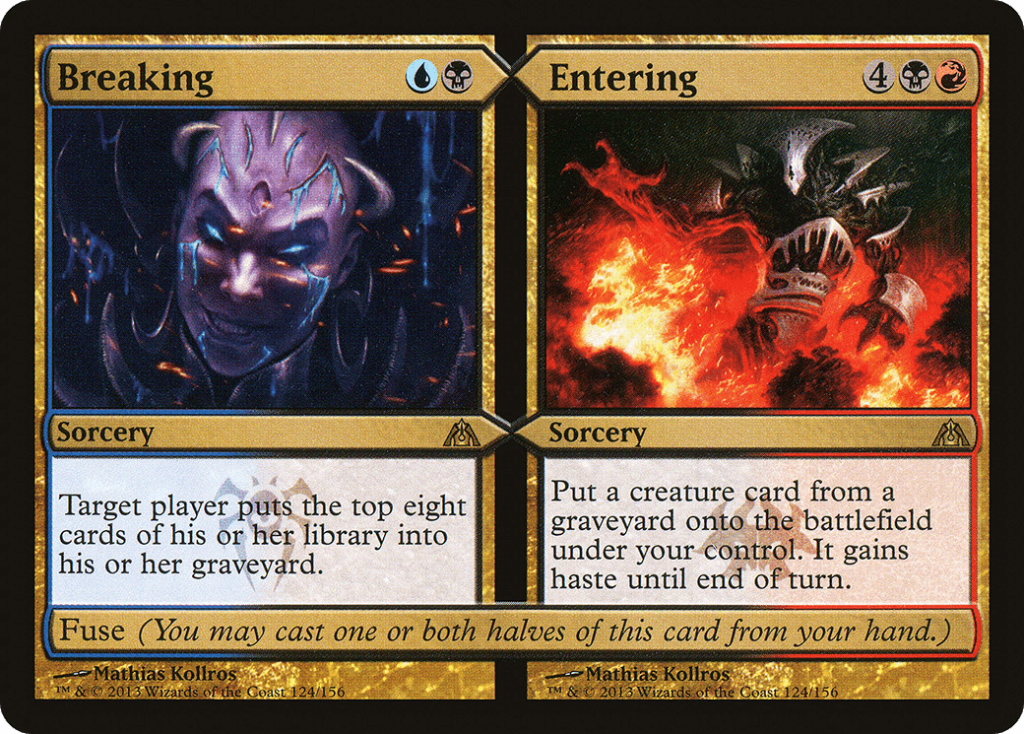
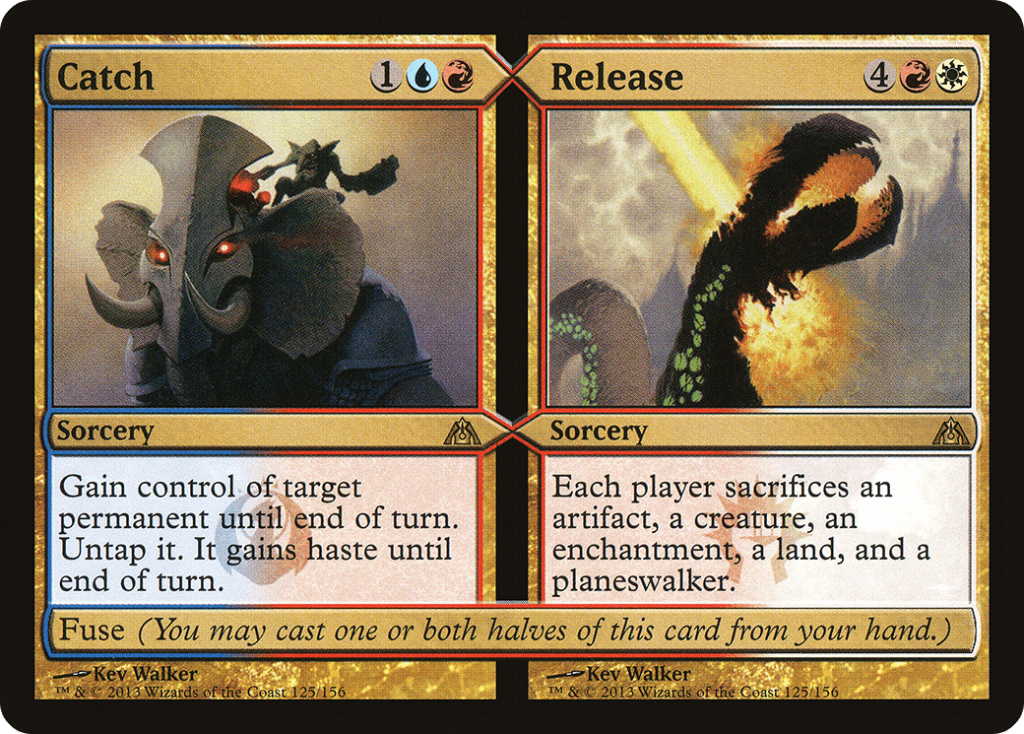
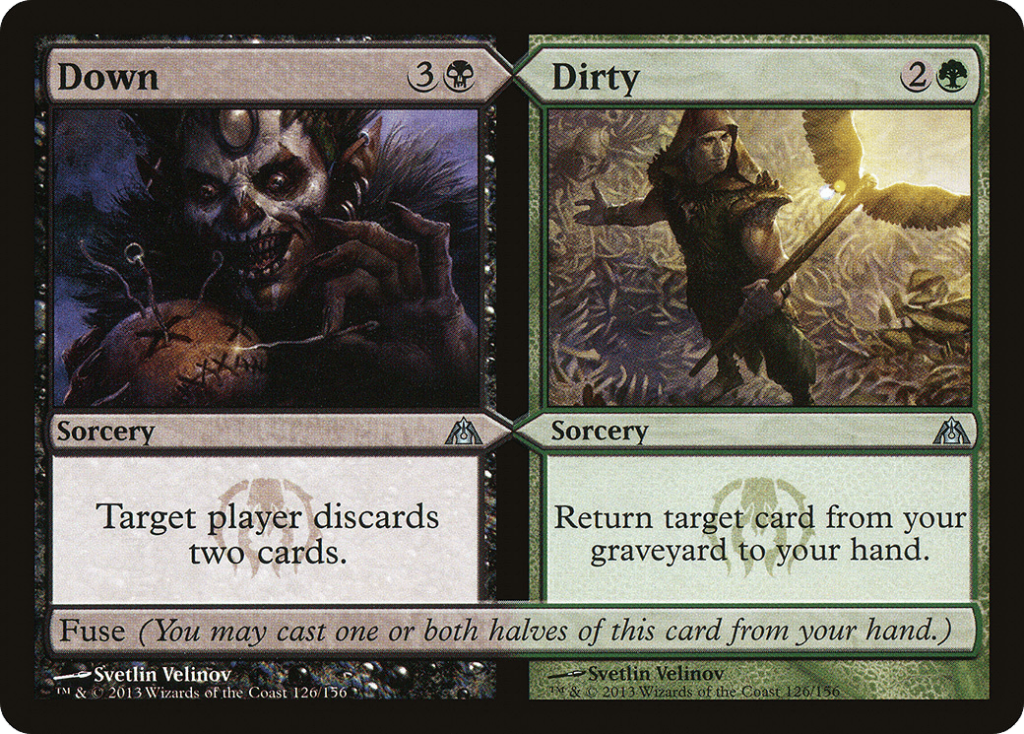
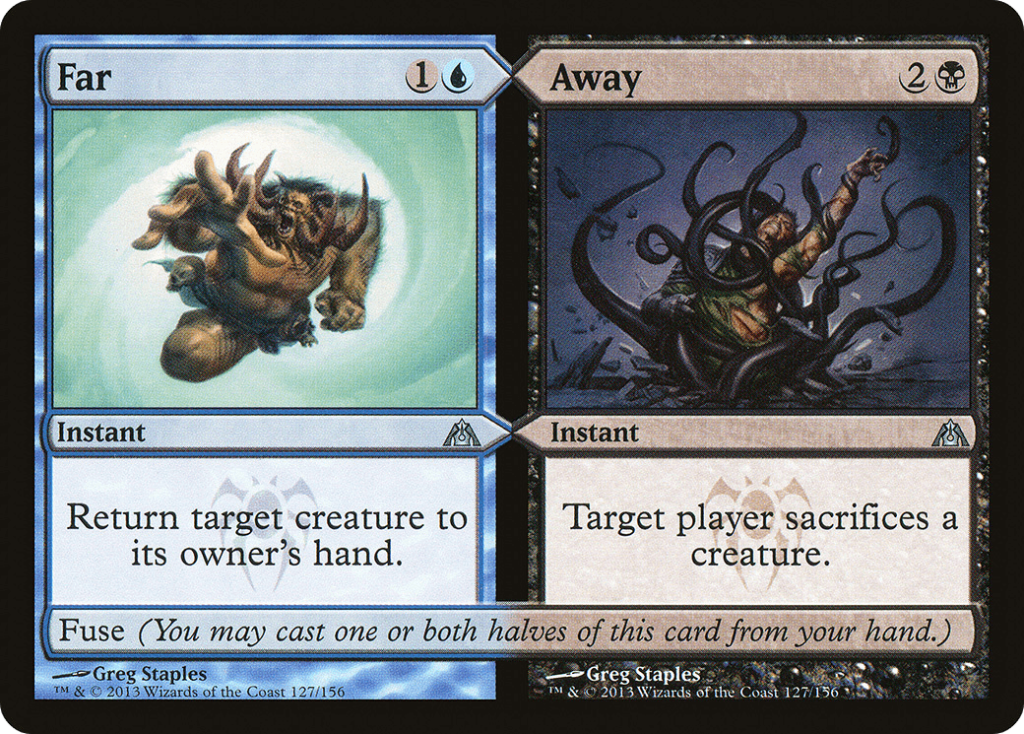
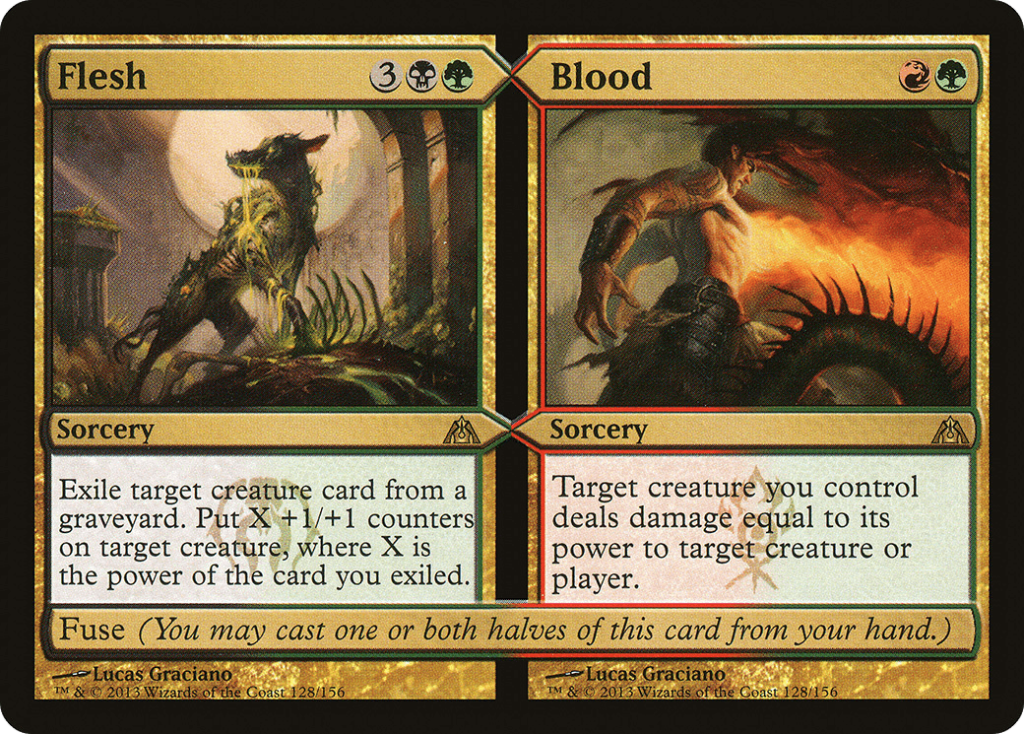



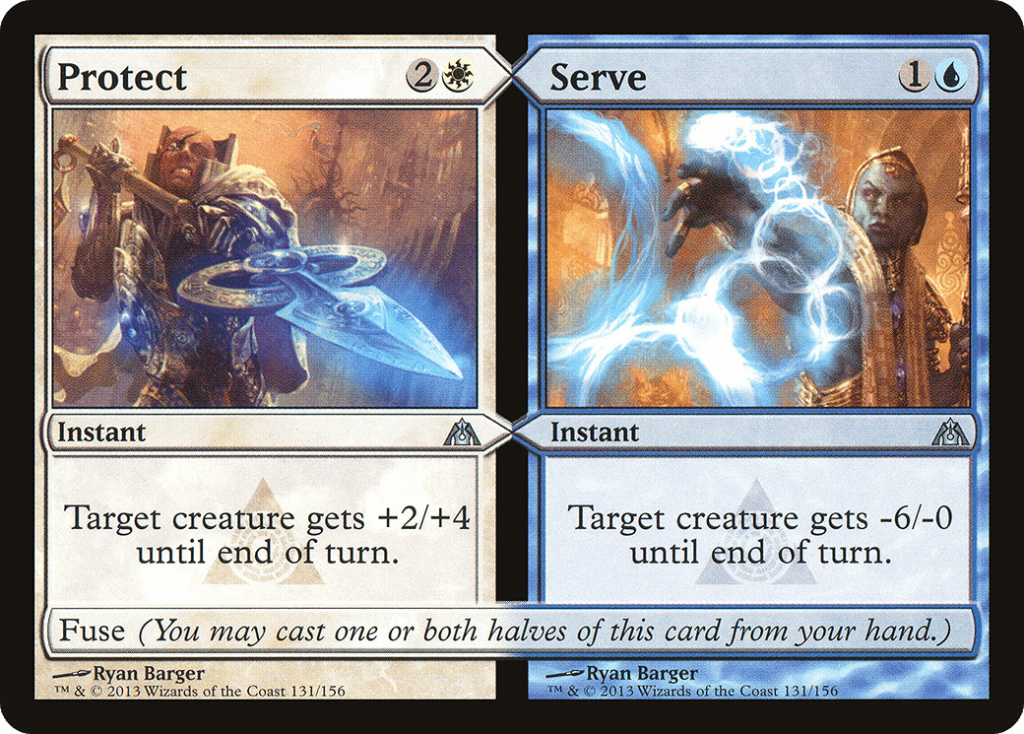
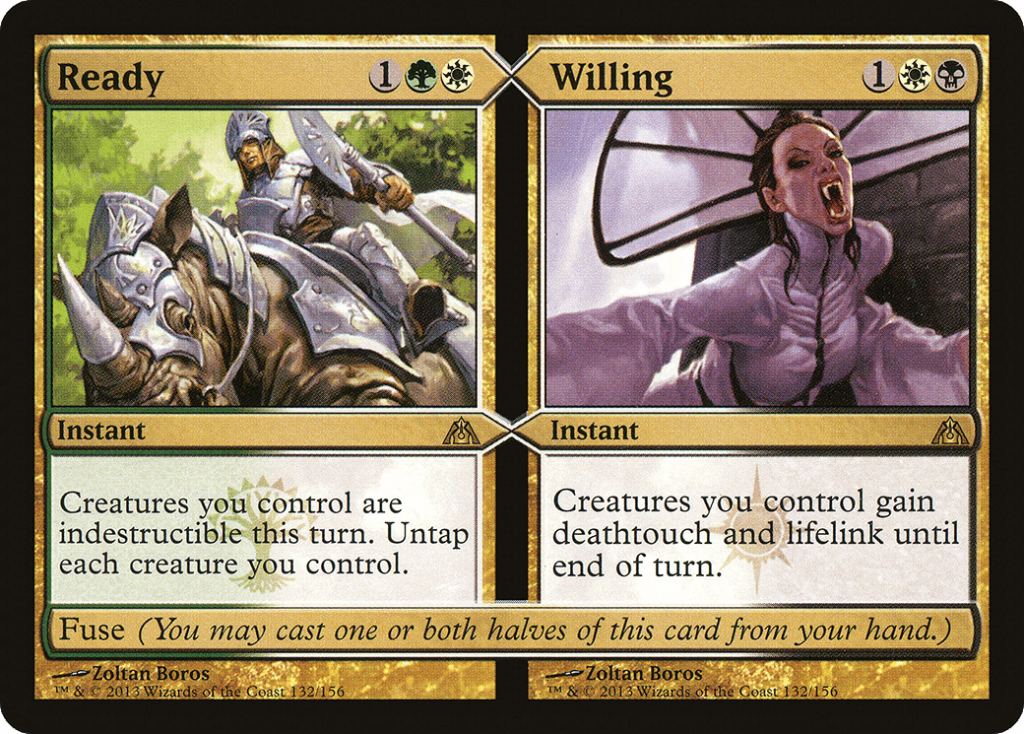


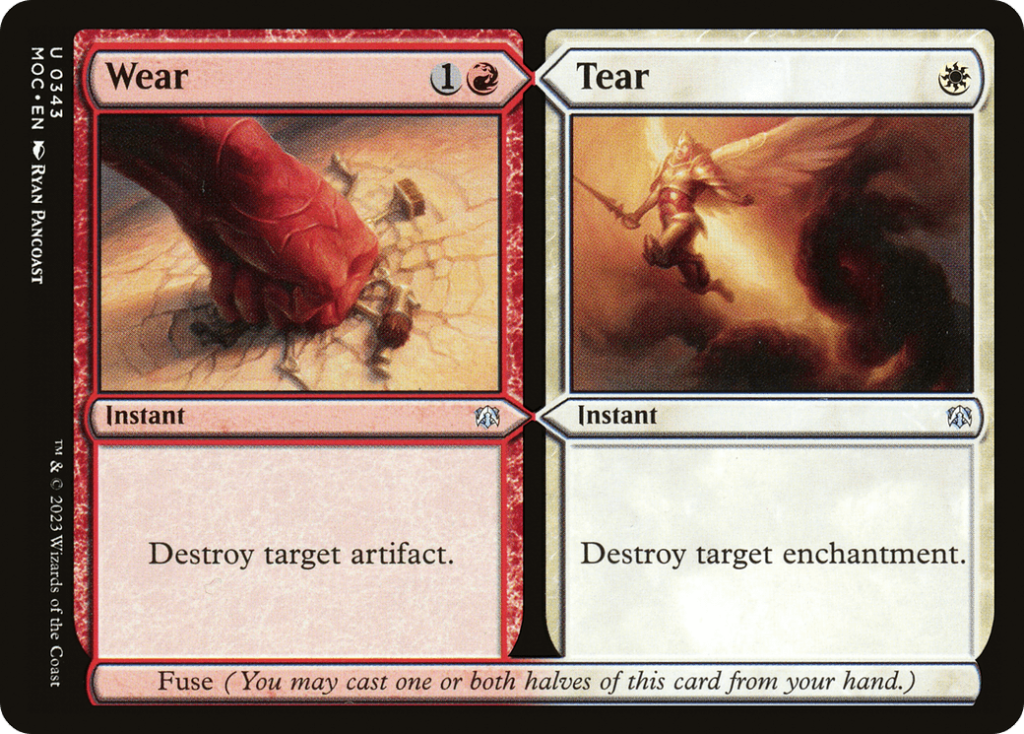
- Alive // Well
- Armed // Dangerous
- Beck // Call
- Breaking // Entering
- Catch // Release
- Down // Dirty
- Far // Away
- Flesh // Blood
- Gallifrey Falls // No More
- Give // Take
- Profit // Loss
- Protect // Serve
- Ready // Willing
- Toil // Trouble
- Turn // Burn
- Wear // Tear
Best Fuse Cards
Beck / Call

Similar to Glimpse of Nature, but with distinct differences, the Beck side of this card allows you to draw cards whenever creatures enter the battlefield, including your opponents’ cards. If you need blockers, Call provides them. Combining both costs 8 mana, putting four bodies on the field, and drawing four cards, which is a neat play. However, even at its lower mana cost, it's not a strong substitute for Glimpse of Nature.
Far / Away

While this card doesn’t see much play outside of just a few Commander decks that can run it, it sees tons of play in Cube drafts. Fusing this against an empty-handed opponent makes your them discard the bounce target, but most of the time, you’d be just okay by casting this card’s first half.
Wear / Tear

Wear // Tear might seem straightforward, but it's a potent sideboard card for many decks. Its strength lies in addressing diverse strategies without limiting your sideboard choices. This flexibility allows you to reserve slots for cards effective against other strategies where Wear / Tear might not be as useful.
Yorion Elves
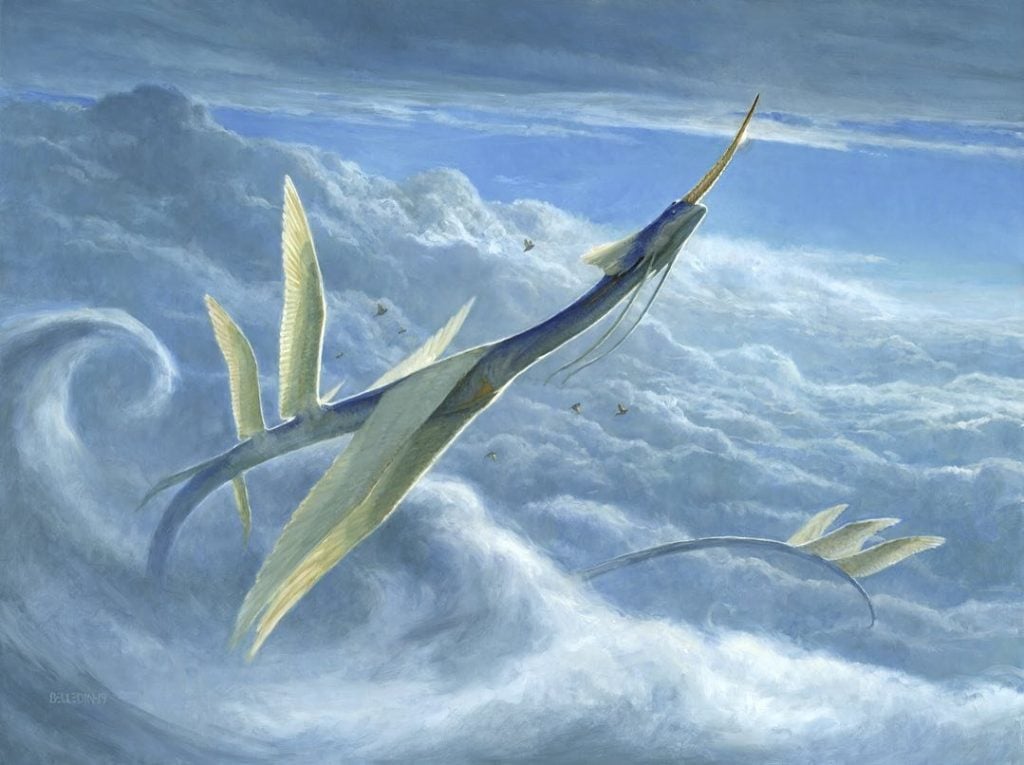
Yorion, Sky Nomad | Illustration by Steven Belledin
Companion (1)
Creature (40)
Dryad Arbor x2
Birchlore Rangers x4
Elvish Mystic
Elvish Reclaimer x4
Essence Warden
Fyndhorn Elves
Heritage Druid x4
Llanowar Elves
Nettle Sentinel x3
Quirion Ranger x4
Wirewood Symbiote x4
Medicine Runner
Elvish Visionary x4
Scavenging Ooze
Coiling Oracle x2
Reclamation Sage
Archon of Valor's Reach
Craterhoof Behemoth
Instant (1)
Sorcery (15)
Green Sun's Zenith x4
Glimpse of Nature x4
Finale of Devastation
Natural Order x4
Beck / Call x2
Land (24)
Bayou x2
Boseiju, Who Shelters All
Cavern of Souls
Forest x2
Gaea's Cradle x4
Misty Rainforest x3
Savannah
Tropical Island x2
Verdant Catacombs x2
Windswept Heath x3
Wooded Foothills x3
Sideboard (14)
Collector Ouphe
Faerie Macabre x2
Progenitus
Abrupt Decay x3
Force of Vigor x2
Carpet of Flowers x2
Sorcerous Spyglass
Bojuka Bog
Karakas
I know I said that Beck // Call isn’t a replacement of Glimpse of Nature, but in a Yorion deck, it's a most needed fifth and sixth copy that once in a blue moon can be cast for its full amount.
This isn’t a dedicated fuse deck, but certainly one that runs probably the best maindeckable card of them all.
Wrap Up
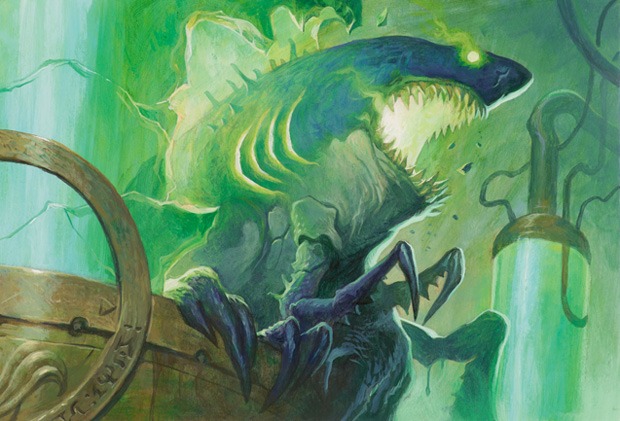
Give / Take | Illustration by Steve Prescott
As you've seen, there aren’t many cards with fuse printed in Magic’s history, mostly limited to their signature set.
That said, they’re a neat improvement over regular split cards that don't have the ability, and overall, I’d love to see it come back in future sets. Would you also like to have it reused? Let us know in the comments.
As always, it's a pleasure researching and writing about these Magic topics, and if you want to learn more about others, remember to follow us on Facebook or X/Twitter, or join the Draftsim Discord to stay up to date with our daily posts.
Take care, and see you next time!
Follow Draftsim for awesome articles and set updates:

Add Comment